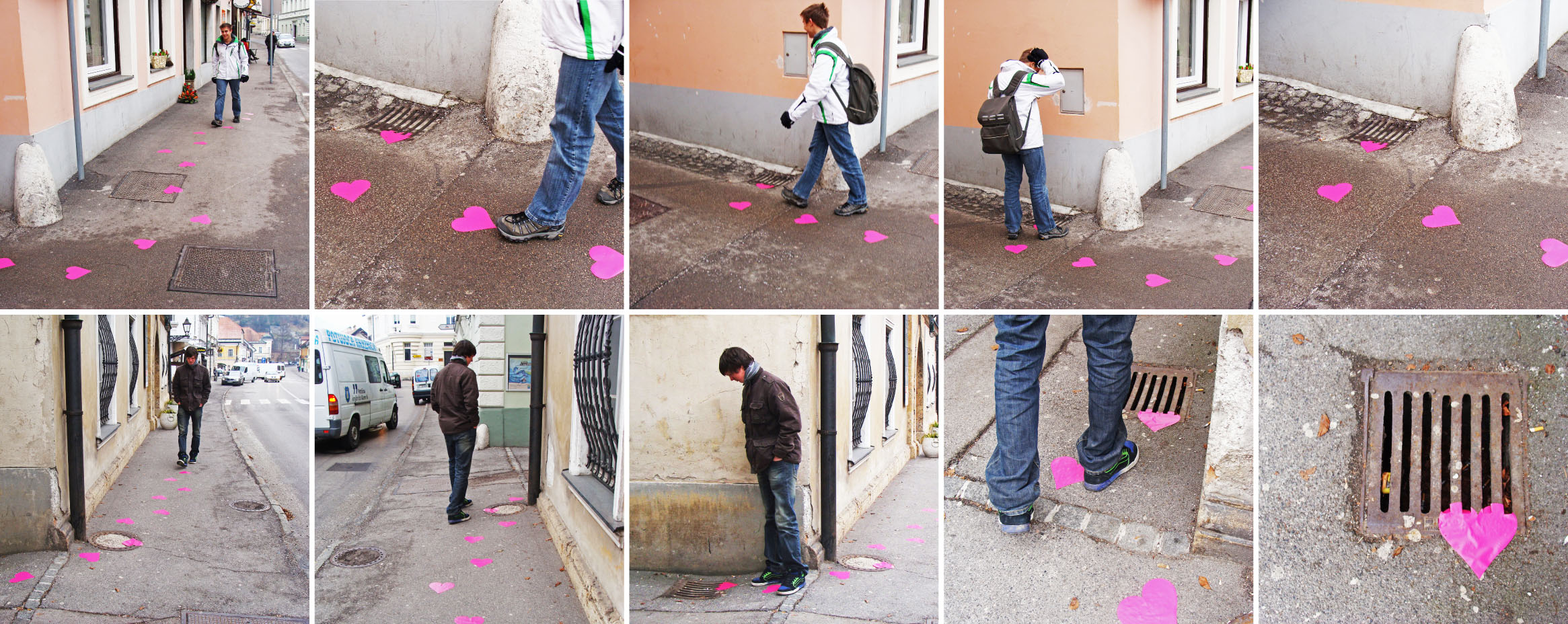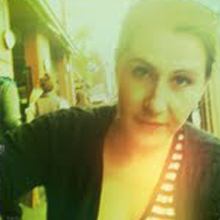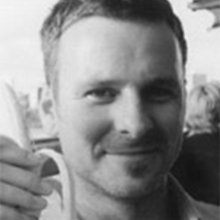SEDUCED BY LOVE
by monika

This work has been commented by 4 curator(s). Read the comments
Title
SEDUCED BY LOVE
Headline
LOVE:CONFLICT:IMAGINATION
Concept author(s)
Monika Klobcar
Concept author year(s) of birth
2.9.1987
Concept author(s) contribution
everything
Concept author(s) Country
Slovenia
Friendly Competition
Love Conflict Imagination (2010-2011)
Competition category
Visual communication practice
Competition subcategory
static
Competition field
academic
Competition subfield
student
Subfield description
University of Ljubljana Academy of Fine Arts and Design Department of visual communications
Check out the Love Conflict Imagination 2010-2011 outlines of Memefest Friendly competition.
Description of idea
Describe your idea and concept of your work in relation to the festival outlines:
I'm reflecting the idea – the starting point – of this project. My opinion is that if love gives you strength and strength leads to conflict, it is not love at all. If, however, those who have the power take advantage of love in order to achieve their goals, they cause the conflict. Therefore the conflict is not in love itself, but in its misuse. In this way, for example, we are exploited by the consumption, resting on the commercialism. It gives us comfort, fame, profit, and more, which indirectly promises us love. In many cases we are not even aware of this process nor are we aware of our responsibility in it. Therefore I do not blame the corporations; the responsibility is in us. It is us who have to resist mass commercialism.
This awareness is what I wanted to stress with my work. My idea was to make the steps in the form of hearts which, if followed, lead to a certain point (outflows on the road, the pile of trash, holes ...). The end of this trace is disappointment, since we are of course expecting more. In this way I literally wanted to show how the misuse of love brings conflict. I wanted them to experience the blank tracking of love and the frustration. It is likely that I would made them angry because they won’t understand the message, but after all I just wanted to see if they could be lead or not and to force them to think about it.
What kind of communication approach do you use?
It’s public art installation, which "works" only when it is placed in the appropriate environment and acts in cooperation with people. The end is not in itself, but requires interaction.
What are in your opinion concrete benefits to the society because of your communication?
The revival of the city, people, who are forced into the campaign begin to doubt and question. Making is simple.
What did you personally learn from creating your submitted work?
At the beginning, my perception of the problem was different: I only saw the guilt of corporations, which manipulate us. That is our common perception. However, by drawing people’s attention to this problem alone, I would not have reached such a strong effect. I came to the conclusion that just by drawing attention to this problem I don’t achieve anything, so I decided to include passers-by directly in the events. I’ve also learned that we own those decisions, having the possibility to resist.
Why is your work, GOOD communication WORK?
By putting things like that, I caused the interaction, not passive observation. People are unintentionally included in the process.
Where and how do you intent do implement your work?
On the streets in the cities
Manufacturing labels in the form of hearts, posted on the street, illustrate human steps which lead us around the bend (or any other obstacle which distorts the view), to a certain unexpected goal (outflows on the road). Symbols, hearts represent love and promise us something nice and positive and the end itself in this context constitutes a point of disappointment.
Did your intervention had an effect on other Media. If yes, describe the effect? (Has other media reported on it- how? Were you able to change other media with your work- how?)
Curators Comments

Dr Zoë Sadokierski
Although not an entirely new idea, this is very well executed. I particularly like that it leads the viewer to a point of disappointment, causing them to reflect on what they have engaged with. Like you, I'm not sure people will understand the message (that the misuse of love brings conflict) but I'm sure it will engage them and make them think. Any of these street intervention projects that make people look at their environment in a slightly different way, or follow a path they wouldn't normally travel, are great and should be encouraged!
The documentation of the project, photographing someone following the trail of hearts, is great, and a good way to explain what the project actually was and how it worked – many times people forget or don't bother to artfully document their installation or temporary works. Well done for doing so.
If the hearts were spaced out a bit more, it would possible engage the viewer more. As they are so close together you can easily see where they end, but perhaps it would be good to try a version where they are spaced out much more and you have to really try to find the next one. That way, when it ends the viewer will be even MORE frustrated...they had to actually put in some work to get no where.

Shoaib Nabi
An interaction piece that provoke your attention — I believe this work has tremendous potential not because that it is just very clever or simple, but it is also economical and easy to disseminate. We as consumers are trained like cattle to follow what is asked of us and we do the same here yet we feel that we have discovered something that is on a more personal level challenging us. The game ends with disappointment, we should be trained to know that but yet we are puzzled because this symbol represent a positive synergy, yet our heart metaphorically speaking is broken when we come to the end of the line and we are facing the gutter.
The project has international appeal and can adapt to any cause and engage its audience to act on a message or action that could produce results and critical mass. I can argue that if we are prepared to be treated like cattle then it is not unlikely that we are also provided with social awareness issues that are advocacy based in the same manner.
I would have liked to see the sequence of the images better arranged and a hierarchy that leads me through the transition on the monitor as I would on the street. A short video footage would have added a new dimension to this project - perhaps something the author could think of doing as he further plans to implement this exciting installation. I am encouraged. Great!

Jason Grant
A whimsical public intervention that has the potential to gently shift a participant's understanding of their environment and their place in it.
I can see the possibilities of different trails composed of different kind of symbols depending on context. The heart symbol can be difficult to work with though because it so worn and loaded and therefore often easily dismissed.
The symbols applied to specific locations could be powerful for residents and strangers for different reasons. For the resident a new door opening into a old room, and for the stranger a familiar door into a strange room.
There's plenty of room in public spaces for more magic certainly.
Roderick Grant
I enjoyed the happenstance of this installation – it seems at once part of its environment, and yet a distinct intrusion. The aspects of path-making, and way-finding that have been considered in this approach make it a good source for re-iteration and integration with alternate routes, forms and outcomes.
Urban interventions in the form of graffiti often fail for the communication aspect is about ego, a simplistic cry for attention. This work is different, it poses questions and offers no direct answers, only potential implications and considerations. As an open-ended work, I feel it succeeds in offering a moment of reflection.
However, a moment is a passing flicker, and perhaps what one should consider here is more of a clue – an implication of intended communication through the integration of another form (the start of a visual narrative?) or typographic/symbolic message.
Overall, I'd like to see this pursued both as the original installation, but also as documentation in photography to further the communicative potential of love and conflict in our imagination.
